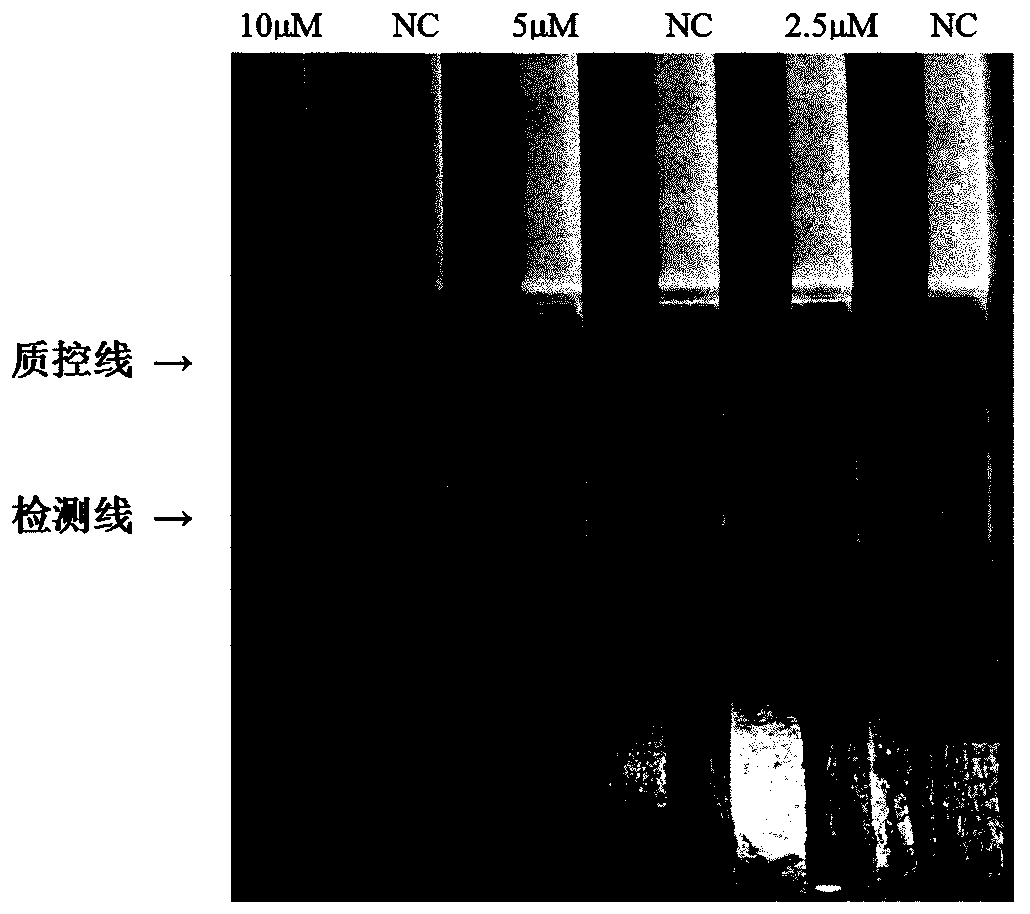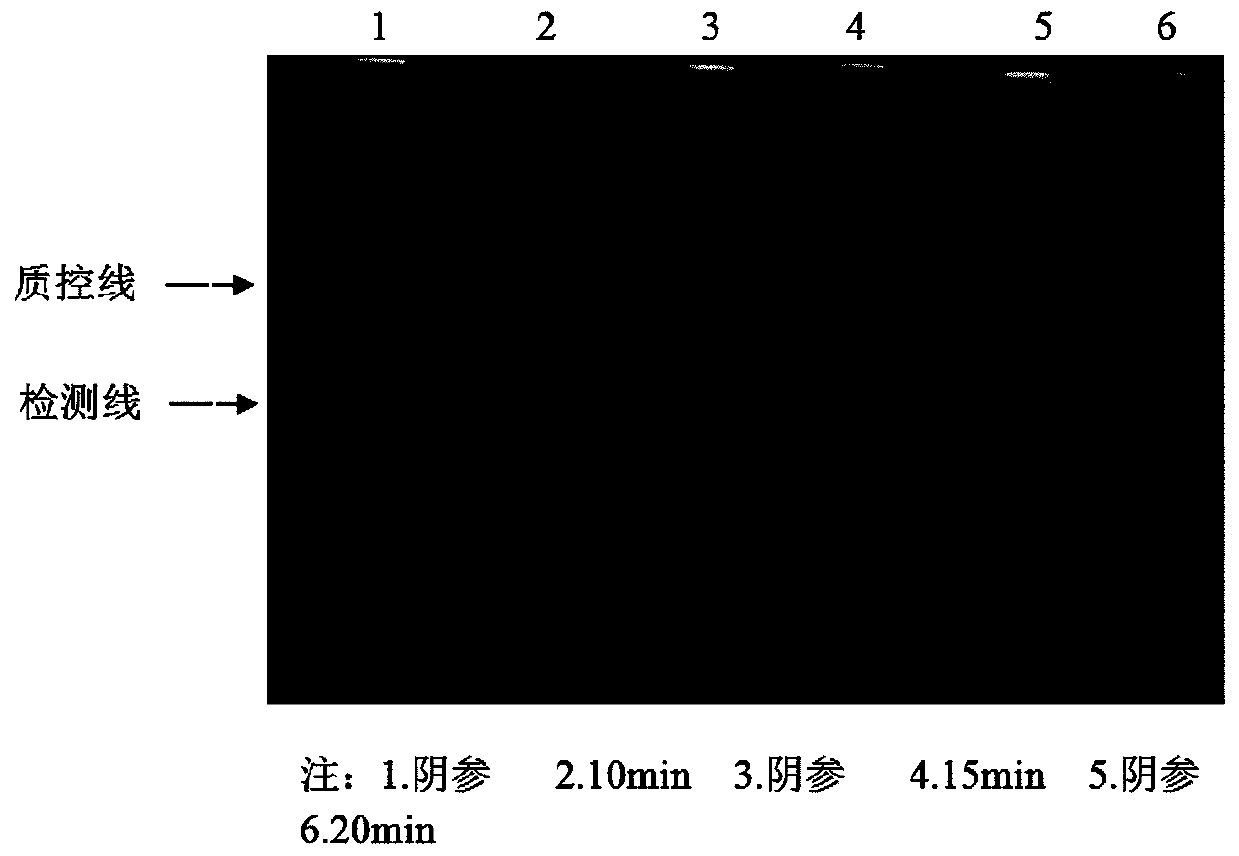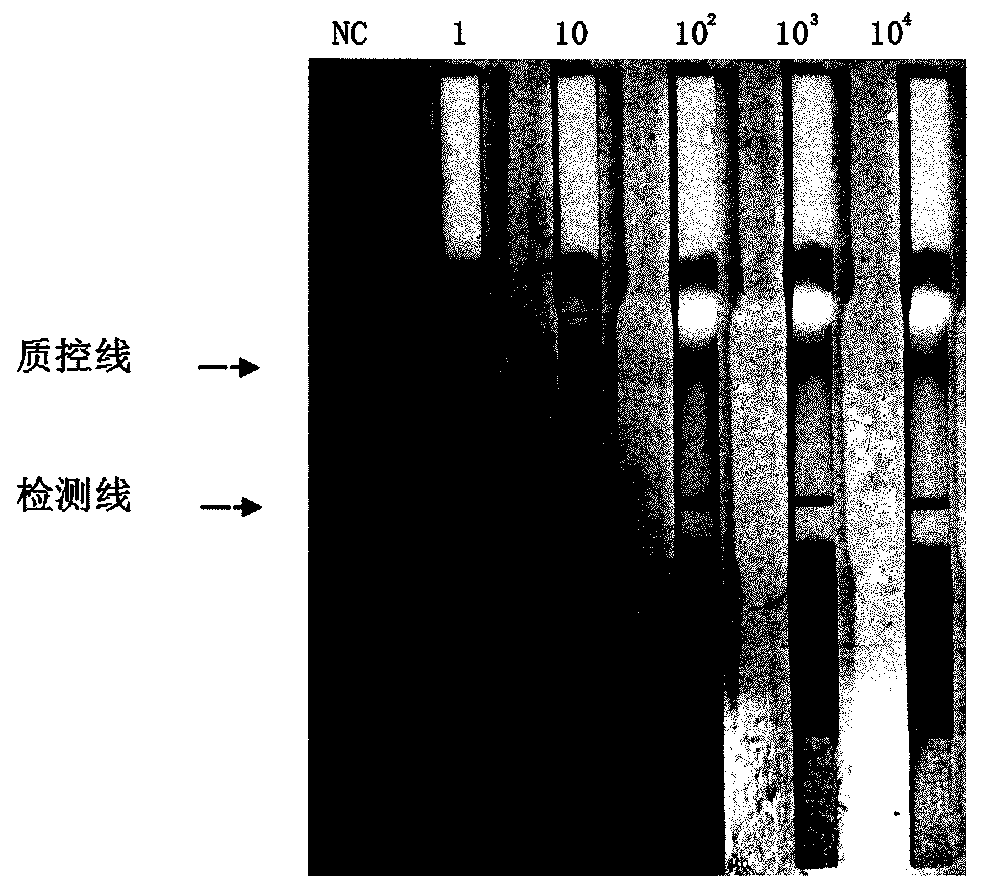RPA detection method, special primers and probe for detecting Rickettsia rickettsii, and uses of RPA detection method in detection of Rickettsia rickettsii
A Rickettsia rickettsii and probe technology, applied in the biological field, can solve the problems of limited practical application range, time-consuming samples, complex processing, etc., and achieve the effects of shortening detection time, saving detection time, and broad application prospects.
- Summary
- Abstract
- Description
- Claims
- Application Information
AI Technical Summary
Problems solved by technology
Method used
Image
Examples
Embodiment 1
[0039] Embodiment 1, design and screening of Rickettsia rickettsia primers and probes
[0040] (1) Design of primers and probes
[0041] The inventor analyzed and determined that the specific sequence of Rickettsia rickettsii used in the present invention is the target gene through file retrieval. The known template gene sequence was obtained from the NCBI database, that is, the nucleotide sequence shown in SEQ ID NO.: 1, and the above sequence was synthesized by Nanjing KingScript Biotechnology Co., Ltd., as a positive plasmid, in the subsequent primers It is used as a template in the process of probe screening and optimization of reaction system. According to the RPA primer and probe design principles, Prime 5 software was used to design 3 sets of upstream primers, 5 sets of downstream primers and 1 probe, as shown in Table 1.
[0042] Table 1 Primers and probes
[0043] Primers / Probes
Sequence (5'→3')
rrf53
CTAGCAATAATCTGTGTTATTTGATAAAAT
rrf...
Embodiment 2
[0054] Embodiment 2: Optimization of RPA reaction system, amplification and detection conditions
[0055] In the process of primer screening, there are still false positives in the detection of lateral flow nucleic acid detection test strips, so the RPA reaction system, amplification and detection conditions need to be optimized
[0056] (1) Primer probe concentration
[0057] Set the concentration of the reverse primer to 10 μmol / L, the concentration gradient of the probe to 10 μmol / L, 5 μmol / L, and 2.5 μmol / L, and combine one concentration of the reverse primer with three concentrations of the probe, Three groups of combinations were combined, and a set of negative controls was set for each combination. RPA amplification was carried out at 37°C, and after the amplification was completed, the products were detected with lateral flow nucleic acid detection strips, and the combination with the best amplification effect and no false positives was screened out.
[0058] Table 3...
Embodiment 3
[0065] Embodiment 3: Sensitivity evaluation of RPA detection
[0066] Dilute the positive plasmid to 10 4 - 10 0 A series of different concentrations such as 1 / μL, 1 μL each was added to the reaction system determined in Example 2, and the primer combination screened out was used to perform RPA on the above-mentioned templates with different copy numbers using the amplification and detection conditions determined in Example 2. Detection, observe the sensitivity of RPA detection.
[0067] As a result, the above samples were all positive from the copy number of 10 copies / μL, indicating that the sensitivity of the RPA detection method of the present invention reaches 10 copies / μL.
PUM
 Login to View More
Login to View More Abstract
Description
Claims
Application Information
 Login to View More
Login to View More - R&D
- Intellectual Property
- Life Sciences
- Materials
- Tech Scout
- Unparalleled Data Quality
- Higher Quality Content
- 60% Fewer Hallucinations
Browse by: Latest US Patents, China's latest patents, Technical Efficacy Thesaurus, Application Domain, Technology Topic, Popular Technical Reports.
© 2025 PatSnap. All rights reserved.Legal|Privacy policy|Modern Slavery Act Transparency Statement|Sitemap|About US| Contact US: help@patsnap.com



